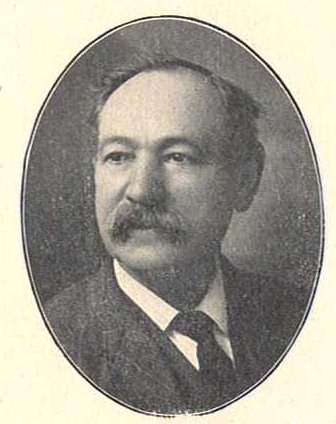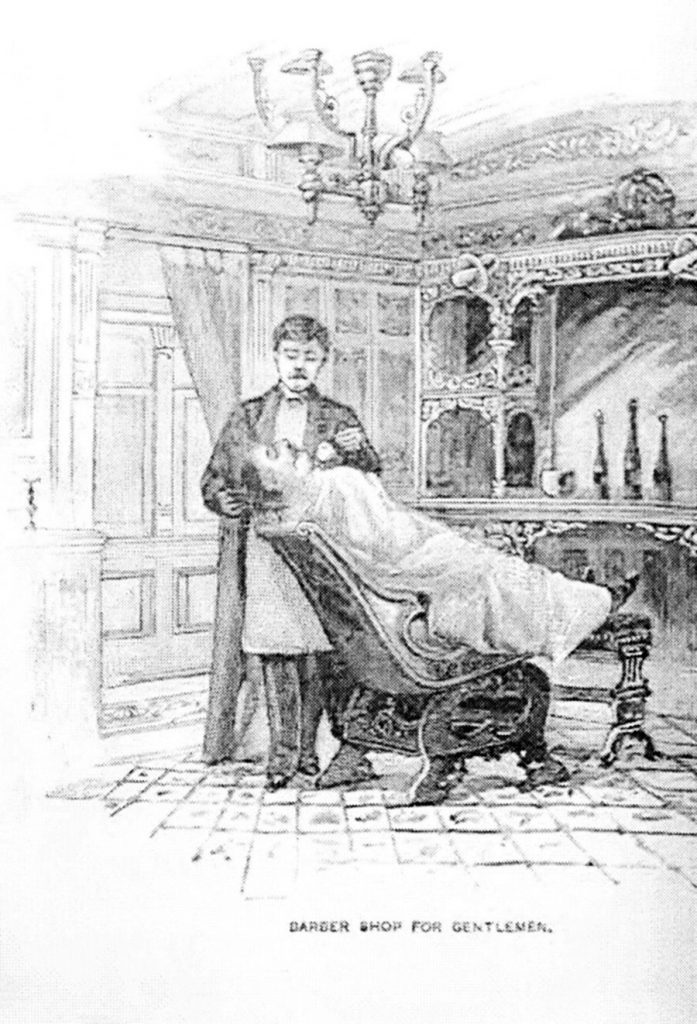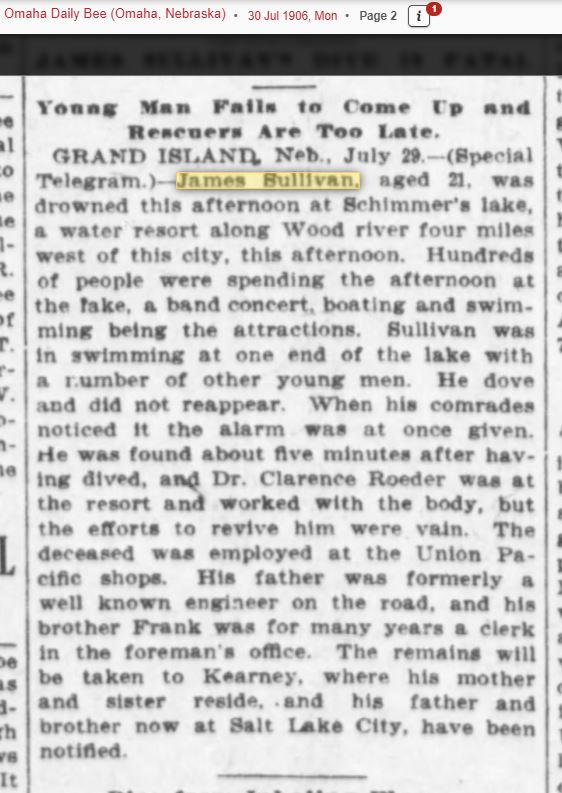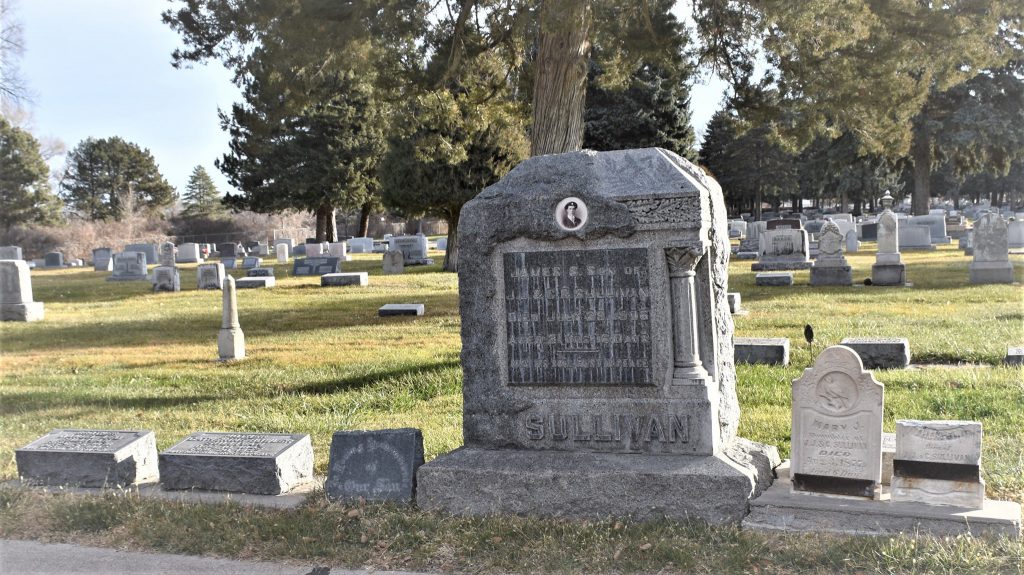Originally published to facebook.com/NorthPlattePL on July 9, 2021
Today’s North Platte History salutes our early railroading days, as many of our early pioneers worked for the railroad. As well as an interesting tale of a man who fought for BOTH sides of the Civil War.
John “Jack” Sullivan was born on a farm in Brookfield, Massachusetts, in 1840. A lover of baseball, John spent much of his youth on the baseball diamond, and went as far as semi-pro. He was also fascinated with train locomotives and the railroad industry.
When John was 12 years old, he was set to live with his sister in Virginia. By the time he was 19, he enlisted in the Confederate Army, 1st Virginia Cavalry.
According to an interview with Sullivan, by the Omaha Bee newspaper on January 12, 1908: “He was assigned to duty at the United States arsenal at Harpers Ferry. He was on duty there at the time it was stormed by the famous “Osawatomie” John Brown; and later he was at the last scene of the tragic career of that enthusiastic pioneer abolitionist. “It was in December, 1859,” he says, “John Brown had been tried for the crime of treason and had been convicted and sentenced to death for attacking the arsenal. I was assigned to guard duty at the gallows the day of his execution. I shall never forget the look on his face as he walked up the scaffold steps. He did not seem in the least afraid though he was weak with long confinement in the close air of the prison. I was very patriotic, but I could not help feeling that there was a man being hanged for a crime which while technically treason, was not really that. Within a year, the great civil war had begun to settle the very question which John Brown had tried to settle by taking weapons forcibly from the government arsenal.”
When the war began, Sullivan found himself almost before he knew it, a member of the rebel army. He had lived with his Aunt in Virginia for seven years, and ended up fighting under the stars and bars of the confederacy. His record in the confederacy was creditable and honorable.
But, his northern sympathies with his family in Massachusetts brought about an inner conscience and he ended up revolting against the cause he originally fought for. Once his decision to desert was made, he undertook the dangerous trek of deserting and running the blockades. He left his Confederate camp one night and made his way through forests, across rivers, plains, and mountains; swimming, rafting, rowing, undergoing great hardships and risking his life at every step. But he finally got within the Union Lines. John J. Sullivan enlisted again, but this time, for the Union Army and served from February 1-July 11, 1865 in the 17th Massachusetts Infantry Regiment through the remainder of the war.
During the 1860’s (between serving as a soldier), John began working with the Baltimore and Ohio (B&O) Railroad as a wiper in the roundhouse. After two months, where he was quickly promoted to fireman.
John wanted to move west; and in the spring of 1871, he moved to Kansas City, eventually joining the Kansas City baseball team. Unfortunately, his baseball career only lasted one season, but while in Missouri, John married Catherine B. Bowler on June 17, 1873. After their marriage, they moved to Omaha, and then further west, “down the line” to North Platte, where he was hired on as an engineer with the Union Pacific Railroad. John and Catherine made their home on the corner of Fifth and Pine, where the Fox Theater stands today. They had seven children, however only four survived past age 22:
- 1. Francis Joseph (1874-1941) “Frank”. Became the chief clerk of the Heintze copper mining plant at Bingham, Utah.;
- 2. John William (1875-1952) “Willie”. He was a machinist in Salt Lake City. ;
- 3. Mary J (August 3, 1877 – August 9, 1877);
- 4. Daniel Leo (1878-1942) “Mickey”. He also became an engineer with the Union Pacific and ran a line from Omaha to Grand Island. ;
- 5/6. Twin Girls— Mary Bebeanna, also spelled Bibiana in some research) (1881-1965) and Theresa (1881-1881). Researchers are pretty sure that Mary B. and Theresa were twins, but cannot conclusively prove this, even after reviewing census records, Newspapers.com, https://northplatte.advantage-preservation.com/, Family Search databases or Ancestry.com. Both females are buried in the family plot, with the same birth month and year. Theresa died in infancy and Mary B went on to live until age 83: Mary B. Sullivan was a very well read, educated, and quite literary. She wrote a number of articles for newspapers, including a poem dedicated to her brother entitled “Mickey the Engineer”;
- 7. James S. (1885-1906). James drowned in an accident at Schimmer’s Lake, along the Wood River, near Grand Island. He was 21 years old and worked at the Union Pacific Machine Shops.
John kept advancing his career with the Union Pacific, and became a fireman, eventually working his way up to passenger service. In 1888, Jack pulled the Golden Gate Special which was billed as “The Finest Train in the World!” It consisted of five vestibule Pullman cars. Passengers could go to a library, a barber, enjoy a luxurious bath, eat a five-course meal, smoke and converse, or sleep. All cars had electric lights and a steam heating system!
On December 5, 1888, the Southern Pacific Railroad joined with the Union Pacific Railroad to introduce its first deluxe transcontinental service, the weekly Golden Gate Special, between San Francisco/Oakland via Ogden to Council Bluffs where passengers connected with the C&NW’s (Chicago & Northwestern Railways) trains to and from Chicago. The cost for travel between San Francisco and Council Bluffs on this train was $60 for the First Class passage and $40 in extra fare for sleeping accommodations and meals in the dining car.
John J. Sullivan retired after 35 years of service and moved to Kearney. He was a member of the Division 88 Brotherhood of Locomotive Engineers. After the death of his son, James, he moved to Omaha, Nebraska in 1908. He died June 1, 1913 at the age of 72. John and most of his family are buried in the North Platte Cemetery.
Thank you for reading and learning our North Platte History! I hope you join us next week!











